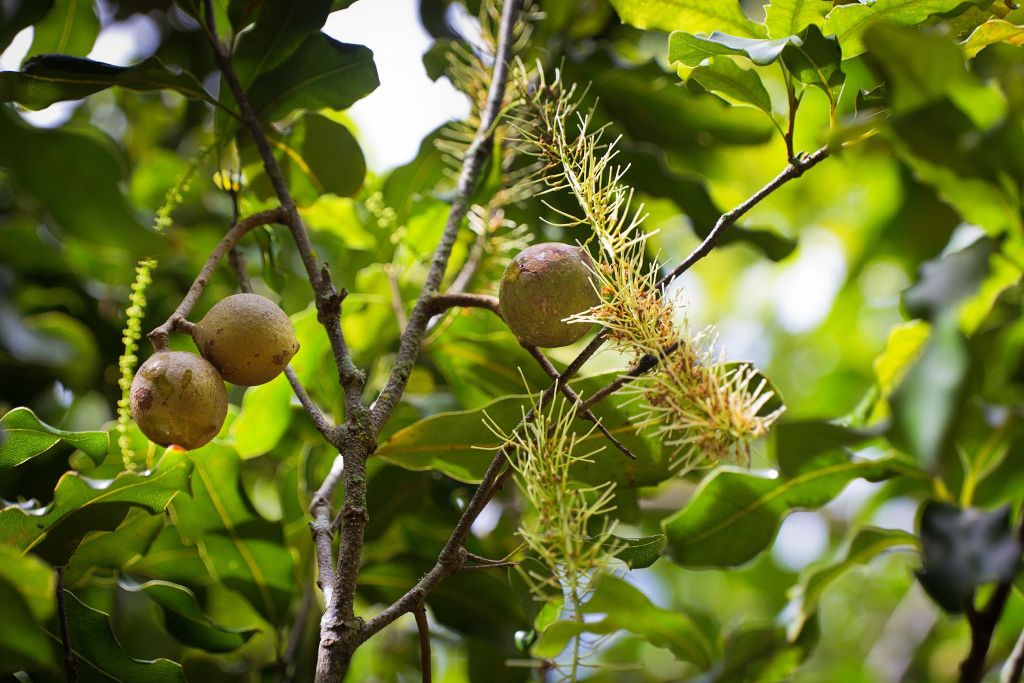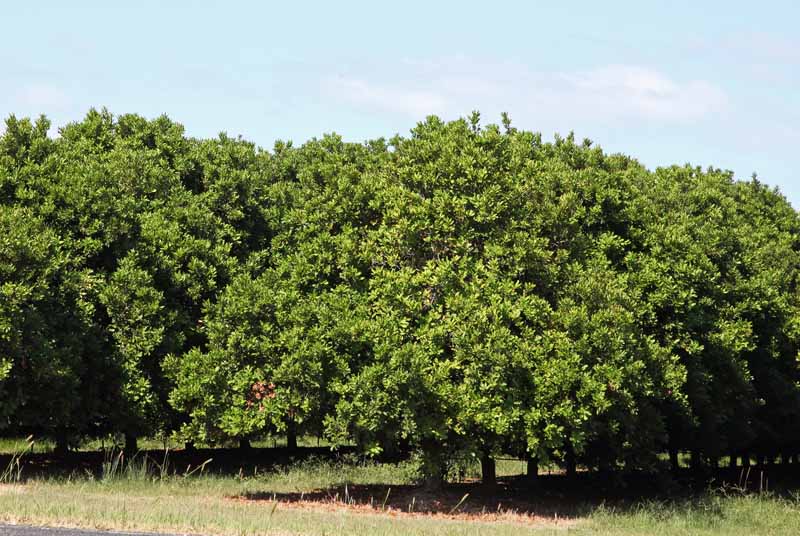How to Grow and Care for Macadamia Tree

Macadamia nuts are sweet, delicious, and flavorful and one of the lovely edible nuts with extremely important healthy nutrients. Macadamia belongs to the family of Proteaceae in the class: Macadamia and the common names include Australia nut, Queensland nut, and bush nut. These nut trees are grown in the tropical climates of Australia, Brazil, Indonesia, New Zealand, and South Africa. It is planted widely in Hawaii as a harvesting crop and is available in seven varieties of Macadamia nuts. The two most popular types are Macadamia integrifolia and Macadamia tetraphylla. Macadamia integrifolia delivers smooth shelled nuts, while a hard and rough shell is provided by Macadamia tetraphylla. The nuts are a deep source of monounsaturated fatties (MUFA) like oleic acid and palmitoleic acids. MUF fats in the diet aid lower whole as well as bad cholesterol and increase HDL good cholesterol levels in the blood.
Macadamia nuts are not just pleasing in taste but are also one of the common nutritious foods nearby. It is used as one of the popular ingredients used in gluten-free food preparations as macadamia nuts nutrition is free from gluten protein. These preparations are a healthy choice in patients with wheat gluten sensitivity and some other celiac disorder.
Soil Requirements
Macadamia nuts prefer well-draining and deep soil as it is a slow-growing plant in clay-rich condition. The soil can be amended by using perlite or sand. The pH level of the soil should be ensured around 5 – 6.5 for the proper growth of the plant.
Sunlight Needed
Macadamia is a tropical tree and demands full sun to grow and produce healthy, nutritious nuts.
Water Requirements

The young macadamia tree should be watered regularly in slightly moist soil. After the plant matures, water it once a week during the budding season. It can then be watered every other day during the season of drought and hot summer.
Fertilizing
Macadamia does not require fertilizer at the time of planting. It is recommended to leave the plant outdoors for six months and then apply a balanced fertilizer containing 1% nitrogen or less, as is suitable for a slow-growing plant.
Pests and Diseases
Macadamia tree is normally pest-free, but thrips, mites, and scales might attack it at times. The practice of using organic pesticides is recommended in case of a large infestation as the tree itself deters them.
Varieties of Macadamia
Three types of macadamia nut trees produce edible nuts that are described below:
- Macadamia integrifolia – White to pink flowers with woody, rounded fruits, and fairly long leaves.
- Macadamia ternifolia- Smaller, multi-stemmed tree with dull leaves and pink petals
- Macadamia tetraphylla- Small tree typically found in rainforests or along borders and creeks in fertile soil areas.
Macadamia seeds can be planted indoors during the late fall to early winter as it allows enough time to germinate before the spring. The fresh seedlings harden off as spring weather warms to outdoor temperatures gradually. Hence, it is advisable to take care of exposing them to cold as they’re sensitive during the early stage of growth.
Macadamia trees belong to the genus Macadamia which contains four species of tree or shrub in the Proteaceae group and is grown for their edible nuts. The three types of macadamia nut trees that produce edible nuts are Macadamia ternifolia, Macadamia integrifolia, and Macadamia tetraphylla.
Macadamia trees do not need pruning to flower and bear its nuts. It is advisable to prune as it is a good way to manage the size of your tree. A macadamia tree can be pruned to any height, and to evade cutting large branches, it can be practiced regularly.





